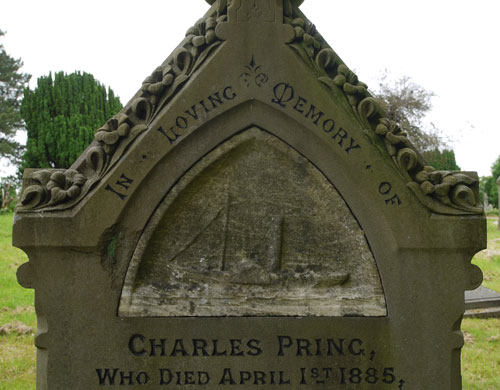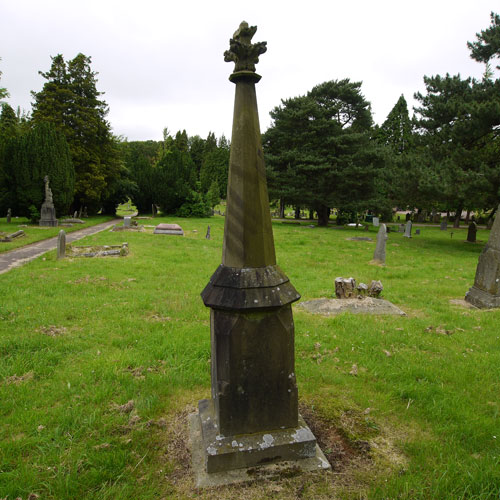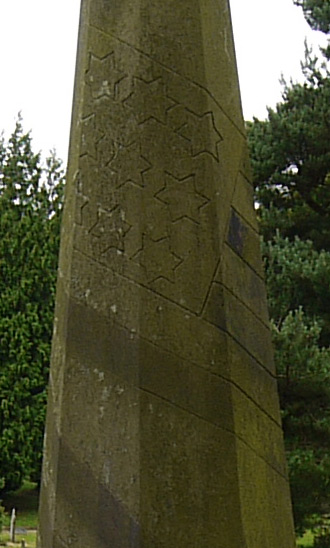St Woolos Cemetery - The Haunted Holy Ground
From the book "The Haunted Holy Ground" by Mike Buckingham and Richard Frame published in 1988.
Of Ships, Sailors,
And A Yankee Sailor's Wife
By Mike Buckingham and Richard Frame
First published 1988
© Mike Buckingham and Richard Frame 2012
The story of marine technology is in the stones. The pilot cutters are but the most numerous examples; elsewhere St Woolos has clippers in full sail, ships in which sail is supplemented by steam and a later development where steam has all but supplanted sail as the means of propulsion leaving the sails as vestigal things.

Location:
The carvings do not show any modern vessels, but the stones speak of men who died as their warships and merchantmen fell prey to that most modern and deadly of killing machines, the submarine with its torpedoes.
Other stones speak of the sea in less direct terms. A lighthouse in stone rears 12 feet over the surrounding graves and in another part of the cemetery a column over ten feet high and with the coloration of the Stars and Stripes just still visible despite the passing of 116 years marks where Armenia Cousins is buried. There is something about this spot in particular which compels you to linger for at only 23 years of age Armenia must indeed have felt herself far from her native New York. We don’t know what it was that took her but it is all too easy to imagine the grief of her husband, Captain Barzula Cousins, destined to sail the Seven Seas for the remainder of his working life, knowing that his beloved Armenia would rest in Newport for ever.

The grave of Armenia Cousins with stars and stripes carved on the column.
Location:FC 49

Armenia is far from the only foreigner to have found their final resting place at St Woolos.
A Cantonese Chinese whose name cannot be deciphered is buried at the foot of a cross inscribed with his native characters - almost certainly a seaman serving on board a British ship sunk in 1917. There is little doubt that the worn gravestone on which the name William Henry can still just be made out comemorates a seafaring man.
William Henry was only 23 when he died in Brazil, of the yellow fever, for long the scourge of seamen. In another few years the words carved into the stone will have been obliterated by the elements. William Henry does not lie at the foot of this stone. Is his grave in that tropical country marked, or is it long overgrown, shrouded for ever by jungle mosses and lianas?